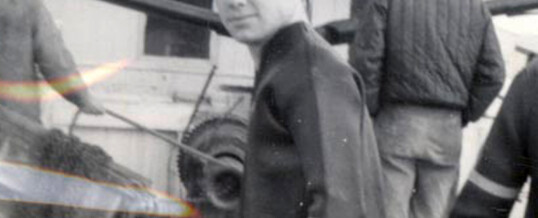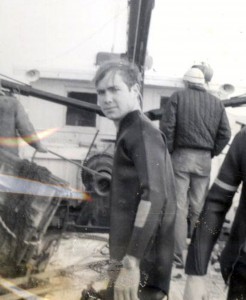
Finding shipwrecks from the air. Can it be done? Absolutely! The first wreck I found from the air, was the Georgiana.
A book on the Confederate Navy published in the late 1800s described the armed steamer Georgiana as the most powerful Confederate cruiser. I also knew she had carried a million dollar cargo. Fascinated by her history, I had been dreaming of discovering her for years.
On March 19, 1965, the one hundred and second anniversary of her sinking, I booked still another flying lesson with the hope that the tide, currents and sunlight would be exactly right and allow me to spot the wreck from the air. My theory was that the strong currents running cross the seafloor would pick up loose silt from the muddy bottom and, as they crashed into the wreck, the muddy water would be thrust up towards the slightly clearer surface waters making a muddy but visible streak. After almost an hour of doing tight, nauseating circles back and forth about a mile off the Isle of Palms, South Carolina, I finally saw what I was after.
It was a brown plume of mud, roiling up around a huge, slightly darker mass of wreckage that I could barely make out, even though the water was fairly shallow. Less than a quarter mile offshore and further south of it, I spotted another mud plume, this time I could clearly make out the top of a ship’s boiler. Inshore of those two sites both was still a third mud plume.
Based on my research, I realized that the middle site had to be the wrecks of the Georgiana and Mary Bowers. The Bowers having run on the Georgiana, which had wrecked first, would be on top. The offshore wreck had to be the Constance Decimer, which had also struck the wreck of the Georgiana and turned offshore before sinking. Although I couldn’t make out any wreckage at the inshore site, I suspected it was the Norseman, which had also been lost by running onto the Georgiana. Her captain, realizing she was sinking had tried to beach her. Later dives from Captain Wally Shaffer’s boats would prove me right on all three sites.
Anyway, with that success behind me, I knew it could be done.
I later started experimenting with different types of films (infrared, ultraviolet, etc.), but had only minor success, and felt it was not worth the added costs or trouble.
I also found that I could spot shipwrecks (and other underwater obstructions) in rivers by carefully noting the surface currents and eddies. A wreck will cause the water immediately above and downstream of to look smooth almost like the upwelling surface of a freshwater spring. We actually found lots of such obstructions this way. When you see them, pay special attention to sandbanks and log jams, as they may have been caused by an earlier wreck.
In very clear waters you can see anchors, cannons and piles of iron or stone ballast (perhaps even even piles of durable cargo such as silver bars), but the higher your vantage point the better. Several friends have used ultralight aircraft to search for wrecks, still another used a tethered balloon. But quite often, all you need to do is look from the highest point on your boat, which is why I love fishing boats with tall tuna towers, especially when working in the shallows of the Bahamas or the Caribbean. Polarizing sunglasses will also help.
On one offshore project, where we needed to search a relatively large area fast, we used an airborne magnetometer. We managed to find a number of shipwrecks, so I can assure you that method can work too. However, don’t fall for the scams by people claiming that, for the right money, they can detect gold by satellite. You would simply be throwing away your money.
Now that you know my secrets, get up in the air and start finding some shipwrecks. LOL
Fly safe and dive safe,
Lee
Share

I look forward to this everyday. Another site I like of yours is http://www.searesearchsociety.com Thank you, Louis
Good day I am so grateful I found your website, I really found you by accident, while I was researching on Digg for something else, Anyways I am here now and would just like to say many thanks for a tremendous post and an all round enjoyable blog. Please do keep up the excellent job.